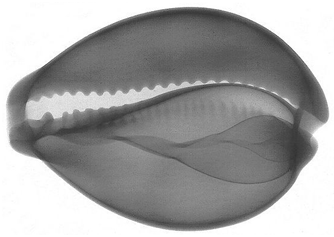Shell Morphology
The structure of the shell is particularly unique to the Cypraeidae family, and is unlike any other gastropod. This is due to the coiling of the shell, in which the spire is concealed under the body whorl (Burgess, 1985). Cowries build their shells spirally during the juvenile stage, whilst increasing their soft body volume (Burgess, 1985). In the second stage of metamorphosis, the "bulla" stage, shell coiling stops and the aperture narrows (Burgess, 1985). Teeth are moulded on both the columellar and outer lips (Burgess, 1985). Calcareous material is then deposited onto both the lateral exterior and dorsal interior surfaces of the shell that was constructed during the juvenile stage, forming a 'callus' that serves in predatory defence (Burgess, 1985). This demonstrates the determinate growth pattern in cowries, in which the size of the shell does not increase after the juvenile stage (Wilson, 1985).
More on this topic can be seen under 'Growth and Development' in the Anatomy and Physiology section.

X-ray of a cowrie, showing the spire which is concealed under the body whorl (Text and Graphics, 2008). |